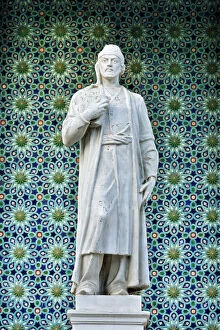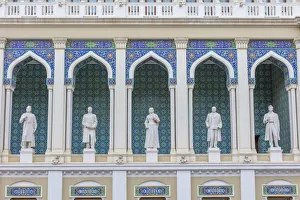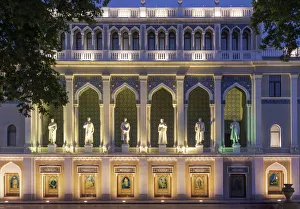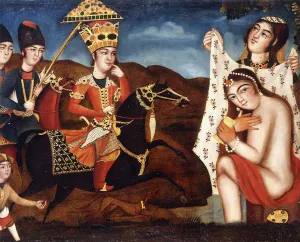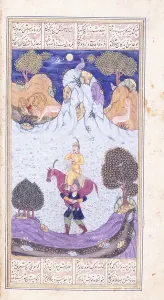Nizami Ganjavi Collection
Nizami Ganjavi, a renowned 12th-century Persian Muslim poet, continues to captivate the hearts of many in Azerbaijan and beyond
All Professionally Made to Order for Quick Shipping
Nizami Ganjavi, a renowned 12th-century Persian Muslim poet, continues to captivate the hearts of many in Azerbaijan and beyond. Born in Ganja, Azerbaijan, Nizami's literary genius has left an indelible mark on the world of literature. In Baku, the capital city of Azerbaijan, stands the magnificent Nizami Museum of Azerbaijani Literature. This museum is a tribute to Nizami's extraordinary talent and his contribution to Azerbaijani culture. Inside its walls lie statues honoring famous Azerbaijani writers who have been inspired by Nizami's works. One cannot help but be mesmerized by the intricate tile depictions found within this museum. One such masterpiece portrays Khusrau stumbling upon Shirin bathing during the Qajar dynasty in the late 19th century. Another captivating artwork showcases Khusrau gazing at Shirin from a copy of Khamsa dating back to 1485. The pages from copies of Khamsa transport visitors into enchanting tales woven by Nizami himself. Layla visiting Majnun in the desert evokes emotions that resonate through time while Farhad carrying Shirin and her horse captures love's strength and sacrifice. Outside the museum walls, art further immortalizes Nizami's stories. An oil painting titled "Khusraw Discovering Shirin Bathing" created around 1840 adds another layer to these timeless narratives. Nizami Ganjavi's Khamsa remains one of his most celebrated works; it comprises five epic poems that delve into themes like love, morality, and spirituality. Written between AH 535-598 (1140-1202 AD), this collection has stood as a testament to his brilliance for centuries. As we explore Nizami Ganjavi’s legacy through his poetry and artistic representations across Baku’s cultural landscape, we are reminded that great minds transcend time and borders, leaving an everlasting impact on the world.

